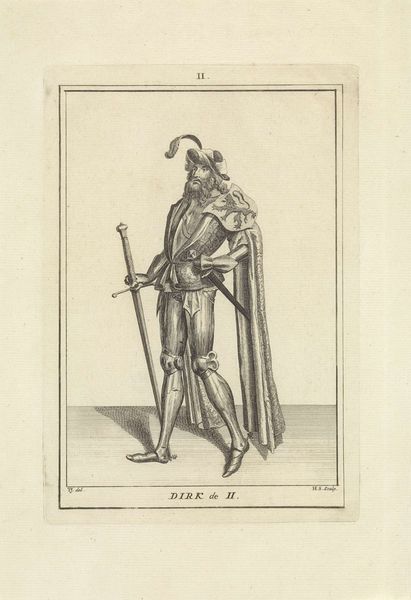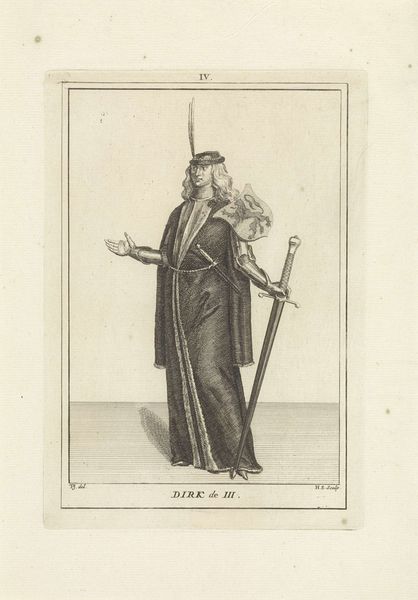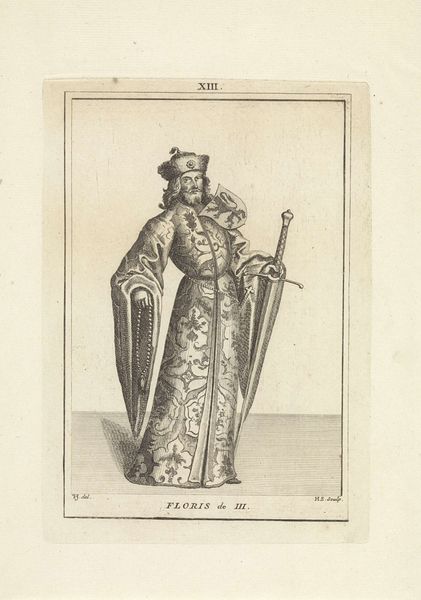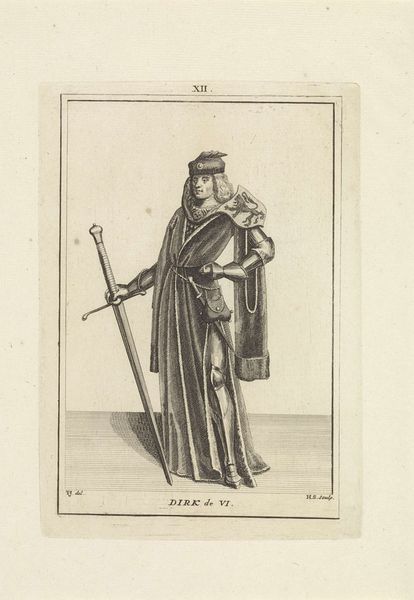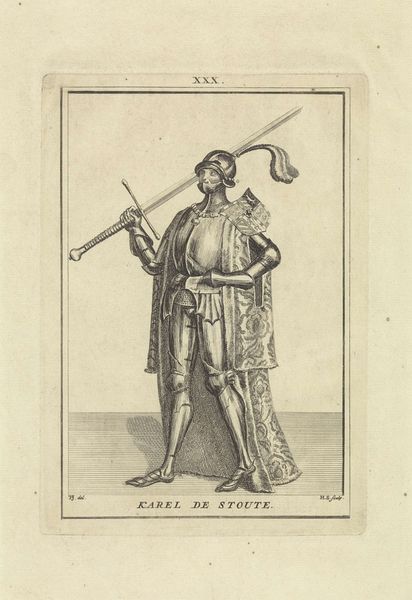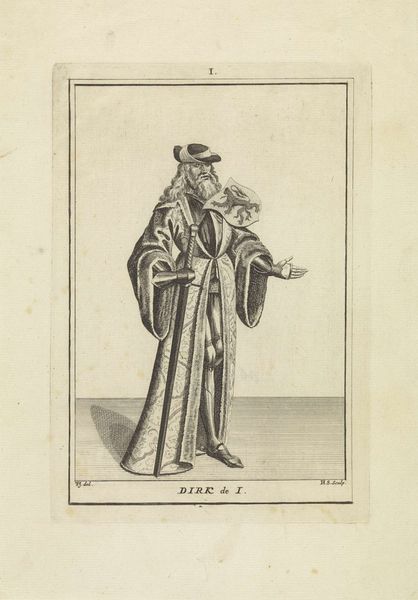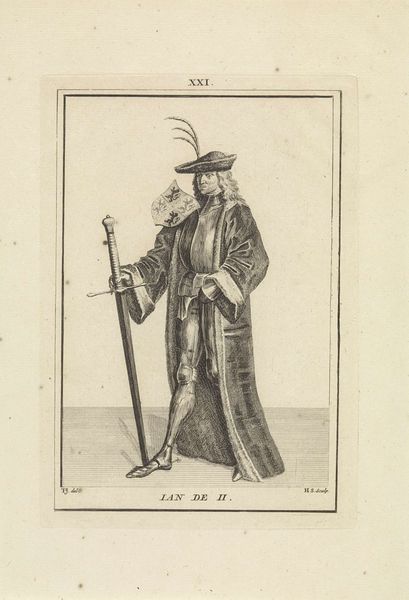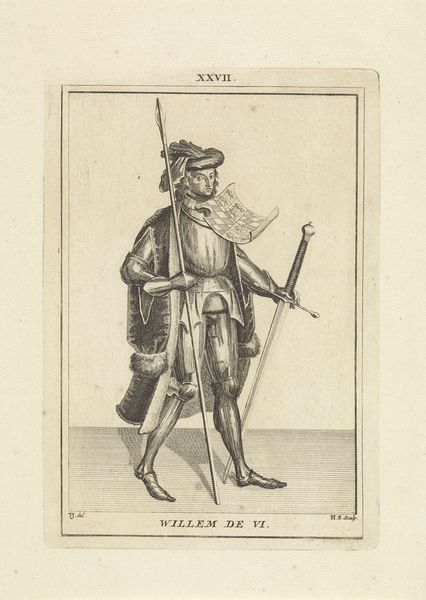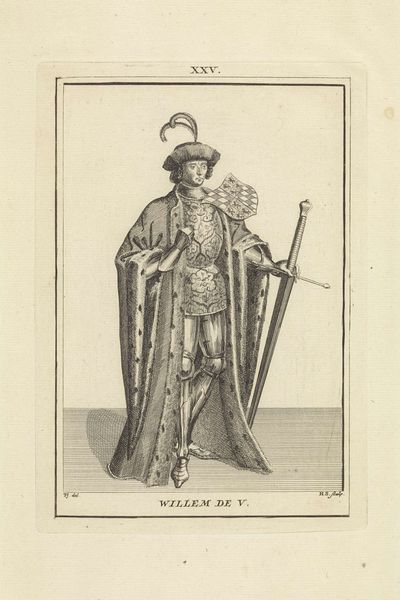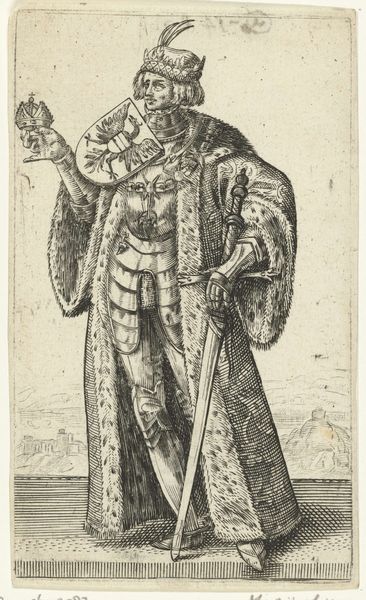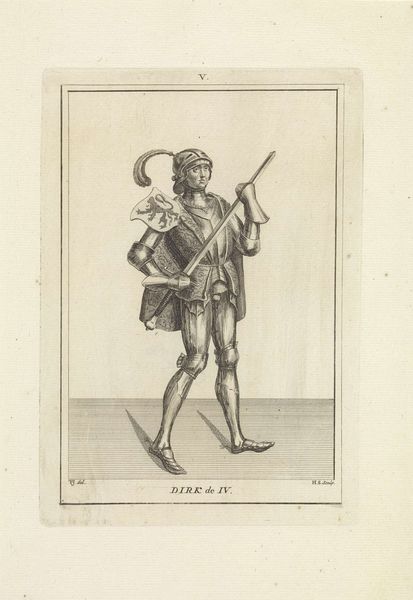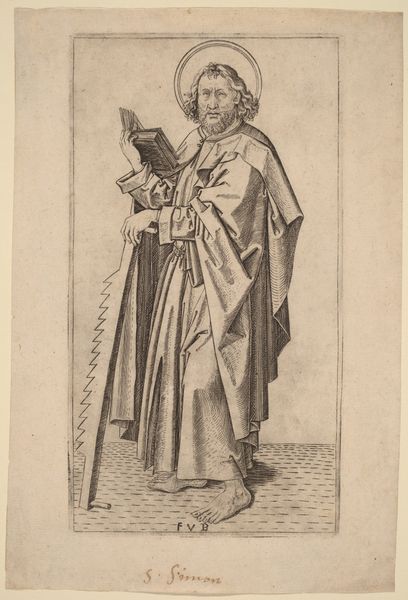
print, engraving
#
portrait
#
baroque
# print
#
old engraving style
#
figuration
#
line
#
history-painting
#
engraving
Dimensions: height 192 mm, width 135 mm
Copyright: Rijks Museum: Open Domain
Editor: So, this is Hendrik Spilman’s “Portret van Dirk V, graaf van Holland,” from 1745. It’s an engraving, which gives it a very graphic, linear quality. It's striking how staged and formal it appears. What can you tell me about its significance? Curator: Well, immediately we should note its historical context. While produced in 1745, it depicts Dirk V, a Count from the 11th century. So, we are dealing with 18th-century notions of history, and specifically, how the Dutch Republic constructed its past. What symbols of power do you notice in the engraving? Editor: Obvious ones—the sword, definitely; his ornate robe suggests wealth, and I guess his pose seems like he is making an announcement. I mean, it gives him this aura of power. Curator: Precisely! Think about the role prints played then. This image, disseminated widely, participates in constructing a specific image of Dutch leadership. It's not necessarily about historical accuracy but about forging a connection to a glorious, powerful past for a contemporary audience. What effect do you think these kinds of representations have on the viewer? Editor: I suppose it presents the past as orderly and authoritative, which may validate the existing social order, giving it a sense of permanence and legitimacy. A carefully curated image of the past is utilized to shape and mold perceptions in the present. Curator: Exactly. And by reproducing images of strong leadership, it implicitly reinforces specific ideas about what constitutes good governance. Spilman's engraving is a prime example of how historical narratives can be strategically deployed in the public sphere through accessible visual media like prints. It reveals the dynamic interplay between art, history, and power. Editor: That makes so much sense. I now see it's more than just a historical portrait; it’s a carefully crafted statement about power and national identity. Curator: Indeed. And that’s where analyzing art through a historical lens gives us richer understanding.
Comments
No comments
Be the first to comment and join the conversation on the ultimate creative platform.
